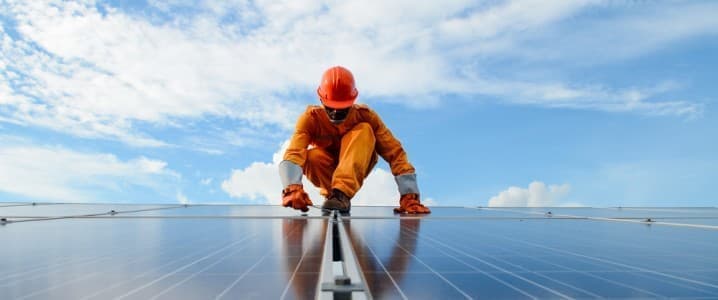
The year that is drawing to a close was a turbulent one, and not only for the oil industry. 2023 served up a reality check to the drivers of the energy transition, too—wind, solar, and electric vehicles.
Next year will not be much different, it seems, judging by trends that we witnessed this year that are bound to accelerate in 2024. Among these are a balanced oil market, more gas supply, a slowdown in solar growth, and an increased focus on nuclear energy.
#1 A balanced oil market
It appears that many oil analysts expect the 2024 oil market to be well supplied because of ample non-OPEC production. Slowing demand will also contribute, notably in China, where post-pandemic economic recovery is, according to these analysts, beginning to lose steam.
This year, the growth in non-OPEC supply was led by the United States, but for next year, the Energy Information Administration is predicting a significant slowdown in growth. Not all agree, however: some expect the latest shale boom to continue, essentially forcing OPEC to keep its output cuts in place.
Because the above environment would mean lower prices for longer, some have predicted that Saudi Arabia may start a price war to regain market share and higher prices. The method: flooding the market with oil to tank prices and hurt higher-cost U.S. producers.
#2 Lower gas investments
The last two years saw a race to secure as much future LNG supply as possible as quickly as possible. Following this, it would only be natural that a slowdown in demand occurs, as noted by Wood Mackenzie’s head of gas and LNG consulting, Kristy Kramer.
Kramer pointed out that 2022 and 2023 saw commitments for over 65 million tons of LNG signed by end consumers and suppliers as evidence of both robust demand and an indication of a slowdown in investments.
Others see demand for gas continuing to grow globally and driving more favorable energy policies as a result. Gas is the obvious and most accessible alternative to coal, and this coal-to-gas transition will continue next year, although challenges will remain. These will be in the form of stricter emissions regulations and insufficient transport infrastructure, notably in the United States.
#3 A nuclear renaissance
Advocates of the energy transition are not big fans of nuclear power for the most part. They argue nuclear is non-renewable and dangerous, citing the only two major nuclear disasters in the history of the technology and the fact that nuclear waste is of the hazardous sort.
Nuclear experts have countered these arguments with the fact that nuclear power is emission-free and that the industry actually has a pretty impressive track record when it comes to accidents and handling waste, especially in modern times as the technology continues to improve.
The latest edition of the COP climate summit indicated that the tide is turning for nuclear as attendees admitted the transition would be much harder—if possible at all—without the baseload electricity supply that only nuclear can provide at an affordable cost among the emission-free generation sources. For wind and solar to be able to provide 24/7 supply, huge batteries would be necessary and battery costs are not in Affordableland yet.
#4 A solar slowdown
The solar slowdown already began this year in Europe and the United States. The reason for the decline in demand for new installations, in Europe specifically, appears to mostly have to do with market saturation, as observed by one of the biggest inverter suppliers to the EU.
Higher raw material costs are also a problem for the industry, which has had trouble fattening its profit margins for a while now as it lives up to its own slogan that solar power is cheap. High costs are perhaps the biggest problem for U.S. solar developers due to tariffs on Asia imports aimed at Chinese PV tech.
Globally, the slowdown, as forecast by Wood Mackenzie’s head of global solar, will be the result of natural trend developments, in this case an S curve. According to Michelle Davis, the annual average growth rate for the next four years in solar will be no growth at all: zero. Also, Davis has predicted a few years of declines in capacity additions.
#5 The transition vs security debate
Last year demonstrated the importance of energy security and temporarily replaced the transition as the number-one priority for a substantial part of the developed world, namely the European Union.
Following this development, a sort of unofficial debate has emerged about the balance between transition and security, and how to strike a balance between them. Chances are the debate will continue next year as well, even though security appears to trump transition consideration where it matters.
The clearest demonstration of this came recently, when China and India refused to sign a COP28 pledge to triple renewable energy capacity by 2030, opting instead for energy security from hydrocarbons. There was also Germany, which, after closing its last nuclear power plants, had to boost its coal consumption to produce enough electricity.
In addition to all these trends, geopolitics will remain a strong factor in global energy, and not only oil and gas, as seen from the latest transport disruptions in the Red Sea that affected all sorts of goods moving from Asia to Europe, including, in all likelihood, solar power equipment. Geopolitics is losing its exclusive tie to oil and gas, and spreading as a critical supply security factor across transition technologies, too.